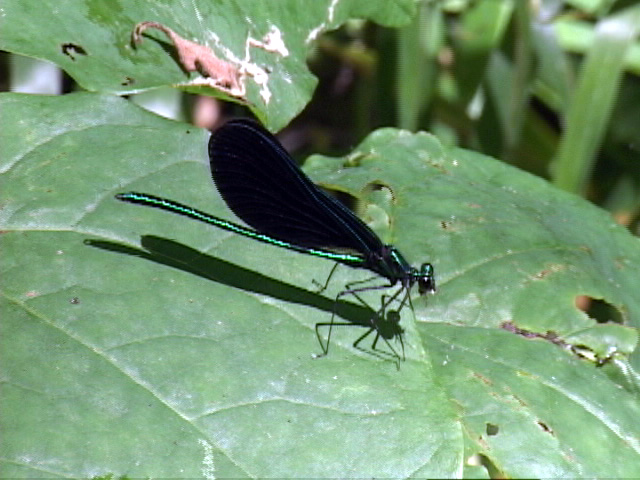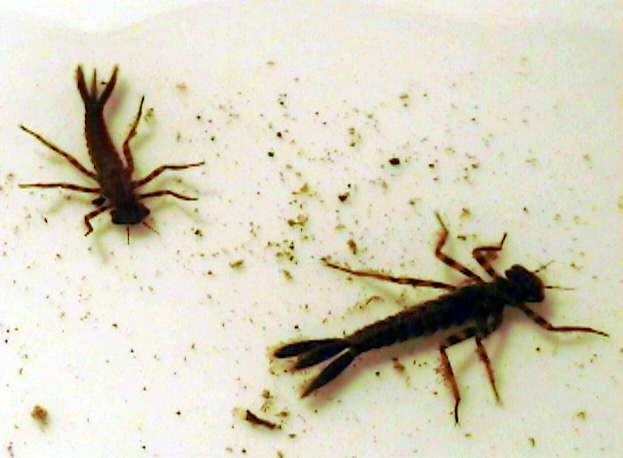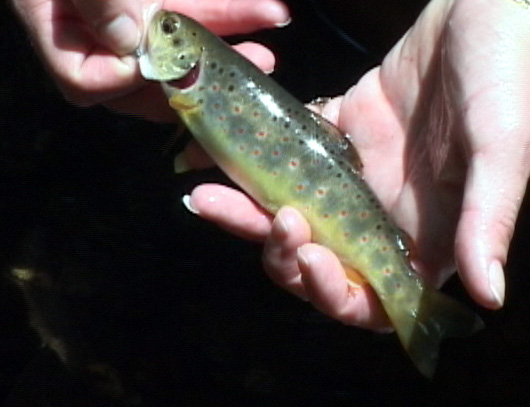
stream in the park but are
not very plentiful.

Craneflies:
Craneflies are fairly abundant in the park’s streams. Trout will definitely feed on them in the larva and adult stages of life. The larva stage of the cranefly looks like a fat worm. The adults have a skinny body and very long legs.
There are only a few aquatic species. Many of them are terrestrial species that live in damp, wet areas. It’s worthwhile to carry imitations of the larvae and adults.
Aquatic Beetles:
Aquatic beetles probably exist in every stream in the park. The important question is “to what extent”. They are usually more common in slower moving water and lakes.
Dragonflies:
Interestingly, most of the time I spot a large amount of dragonflies in the park, they are eating mayflies, caddisflies or midges. You will see them dive down from high in the air and grab a small mayfly. I stopped fishing Little River one day just to observe the feeding dragonflies. Dragonflies are found more often in still or slow moving water and are not exactly plentiful in the park.
Damsel Flies:
Like the dragonfly, damsel flies are not very plentiful in the park. They prefer still to slow moving water. We question their importance as a food item for trout.
Dobsonflies:
The adults of the hellgrammites are called Dobsonflies. If you have collected very many aquatic insects, you have probably found this creature. They require lots of oxygen and cool water. They are fairly common in the park, especially in water that borders being too warm for trout.
Certainly the dobsonfly larvae are a major food item for the smallmouth bass. The dobsonfly undergoes complete metamorphosis. The hellgrammites, which live from one to three years depending on the species, crawl out of the water to hatch. This can be an important food for trout and we do recommend you carry some imitations of hellgrammites.
Copyright 2011 James Marsh
